
On August 8, 1958, the first aircraft artificial rain enhancement operation was executed in Jilin, usherin in the new era of contemporary weather modification in China. For the past 6 decades, weather modification operational system has evolved, enhanced capabilities to develop cloud and water resources, and given play to pronounced benefits in agricultural drought alleviation, hail prevention and disaster reduction, water resources deficit mitigation, and ecology improvement, and so on.
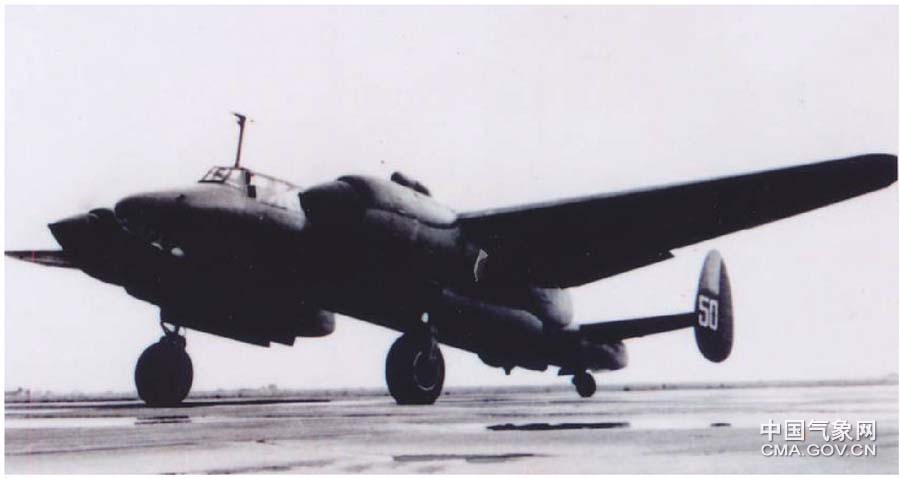
In 1958, the first aircraft artificial rain enhancement operation was executed in Jilin
Contemporary operational system
In 2007, Weather Modification Center of China Meteorological Administration (CMA) was established, with operational command system characterized by real-time monitoring and forecast, information processing and transmission, operational decision-making, and reuslt evaluation coming into being. In 2013, the first regional operational institution, Northeast China Regional Weather Modification Center was set up.
At present, China has established 6 regional weather modification centers, and operational platforms like telecommunication network system, video consultation system, data collection and storage management system, national information collecting and monitoring system, and product sharing and distribution system; formulated 5-phase operational procedures equipped with weather conditions prediction, warning, follow-up command, and result verification; formed national(regional)-municipal/county-level whole procedure operational system; leveraged big data and cloud computing to realize step-by-step operational guidance, product directive dissemination, and information upload,etc.
China has set up an observation system composed of 34000 automatic weather stations, 164 new-generation weather radars, 260 isolated warning radars, 8 sets of airborne detection system, and so on. It also possesses a space-ground-based coordinated operational system constituting 6500 antiaircraft artillery, 50 aircrafts, 8200 rocket systems, and 50000 professional and amateur crew team.
Science and technical support
China has successfully developed temperature and air pressure adjustment cold cloud chamber, high efficient silver iodide flame agent, smoke projectile rocket for rain enhancement and hail suppression, and so on. In the wake of 21st century, artificial rain enhancement, hail suppression conceptual model, cloud model, detection and operational technologies, key equipment R&D have made new progresses. In 2007, Chinese Academy of Meteorological Sciences was awarded Artificial Rain Enhancement Contribution Prize of World Meteorological Organization.
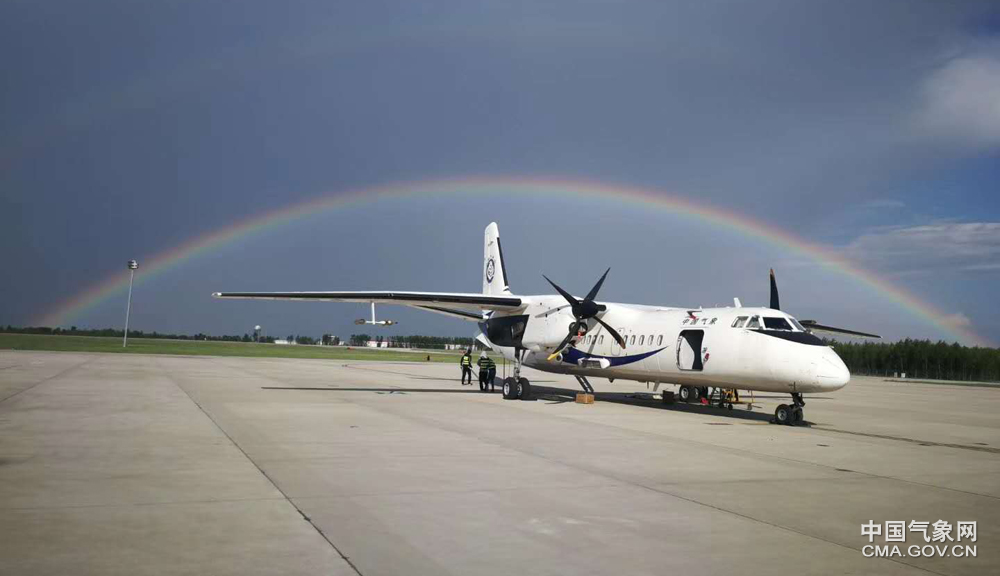
The Modern Ark 60 (MA60), CMA's first weather modification aircraft, which put into operation officially in 2015.
In recent years, CMA has conducted several key national research programs in airborne cloud precipitation particle spectrometer and imager development, cloud precipitation physical and atmospheric water circulation process, and cloud and water resources assessment, and utilization demonstration. CMA has also established key open laboratory of cloud and fog physical environment, joint open laboratory of weather modification, and a batch of field experiment bases; developed myriad scientific instruments like cloud particle imager, precipitation particle imager prototype, dual-polarization milimeter wave cloud radar.

Cloud research laboratory
CMA also independently developed cloud precipitation numerical weather prediction system with 3-km horizontal resolution was placed into operation. CMA has also completed aerial cloud and water resources zoning climate distribution assessment, improved the formula of cold and warm cloud catalyst, applied technologies like Internet of Things in weather modification operation, and propeled scientific research results to be transformed to operational application.
Over the years, China has conducted extensive technical exchanges with the United Kingdom, the United States, the Republic of Korea, the United Arab Emirates, Nepal and other countries. More than 10,850 technical personnel are engaged in the weather modification operation.
Service benefits
In the past 6 years, the country has carried out 6,194 aircraft artificial precipitation operations, 16871 hours of flight, 290,000 ground operations such as ground artillery and rockets, and a total of 740,000 rockets and 5.26 million rounds of artillery shells, with an accumulated rainfall of 286 billion cubic meters, the loss reduction of hail disasters is about 70 billion yuan. The layout of the operation is becoming more reasonable, and the ability to serve economic and social development and ecological civilization construction has been effectively enhanced.
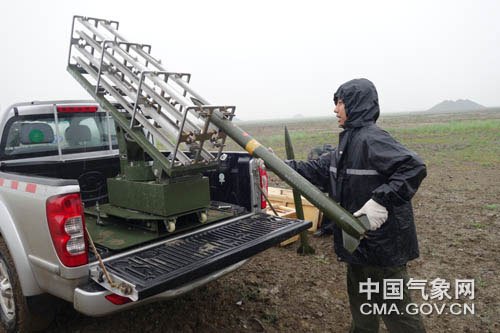
A worker of Jilin meteorological department was preparing for rainfall enhancement operation in 2015.
Cases:
Rain enhancement and drought relief
With the intensification of global climate change, drought disasters have occurred frequently. Through rain enhancement operations, water resources are developed to reduce agricultural drought losses.
In the spring of 2017, there was a major drought in the north China. The CMA Weather Modification Center, the Northeast Regional Weather Modification Center, and the six provinces (autonomous regions, cities), including Inner Mongolia, Jilin, Liaoning, Hebei, Beijing, and Tianjin) carried out 32 aircraft and 626 ground operations. Rainfall in the target area was generally above moderate rain, and the drought was significantly alleviated.
Hail suppression
Carrying out hail suppression operations at key agricultural time to reduce the damage caused by hail is a strong guarantee for economic crops and food production.
Yunnan, Guizhou, Fujian, Shaanxi and other provinces have strengthened hail suppression operations to effectively protect agricultural crops such as flue-cured tobacco and apples. According to statistics, in recent years, the operations can cover an area of about 500,000 square kilometers per year.
Water resources development and ecological construction
Rain enhancement are carried out widely in the ecological key protected areas, the main rivers, lakes and reservoirs.
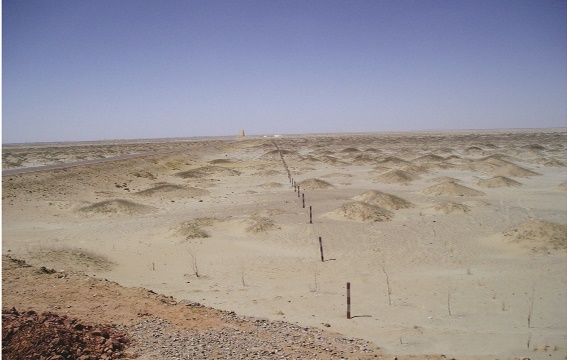
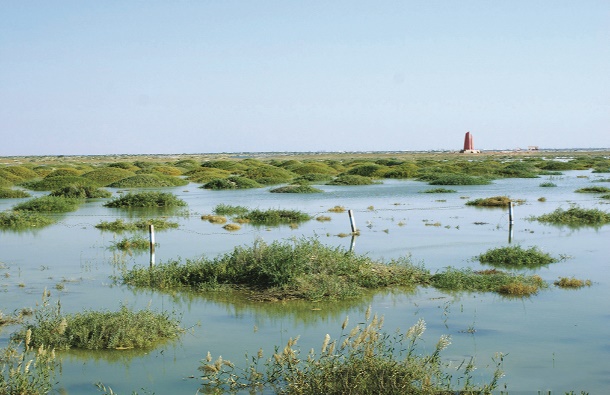
Comparison pictures of Qingtu Lake in Gansu in 2010 (above) and 2016 (below)
Relying on the Sanjiangyuan artificial precipitation enhancement project, the meteorological department strengthened rainfall enhancement operations in Qinghai Lake and the upper reaches of the Yellow River, promoted the expansion of lake wetland area, increased grassland biomass and coverage, and gradually restored the ecosystem water conservation function. From 2006 to 2016, there is about 55.173 billion cubic meters of enhanced precipitation in the Sanjiangyuan area, increasing the runoff of the Yellow River by 8.038 billion cubic meters. The “Thousand Lakes Landscape” of the Yellow River source reappeared.
Forest and grassland fire mitigation
In the high-risk period of forest and grassland fire, artificial precipitation enhancement work plays an important role in reducing fire risk and extinguishing wildfires.
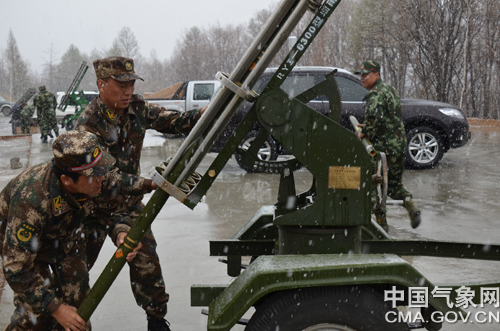
In 2017, in order to put out large forest fire of Inner Mongolia, the staff carried out weather modification.
At the end of April 2009, a forest fire broke out at the Yinan River Forest Farm of the Zhanhe Forestry Bureau of Heilongjiang Province. The China Meteorological Administration mobilized three aircraft and used 35 rocket launchers for rain enhancement operations. Small to moderate rain occurred in the wildfire area. In the spring of 2017, large forest and grassland fires occurred in the Hulunbeier area of Inner Mongolia. The meteorological departments at all levels seized the favorable weather conditions to launch the three-dimensional operation. During the operation period, three aircraft were organized to fly for 10 hours, with flight distance over 3,500 kilometers and 248 rockets launched. Under the combined influence of natural precipitation and rain enhancement, the precipitation in the fire area reached 59.5 mm and the snow depth reached 21 cm.(Sep.13)
Editor: Liu Shuqiao, Hao Jing